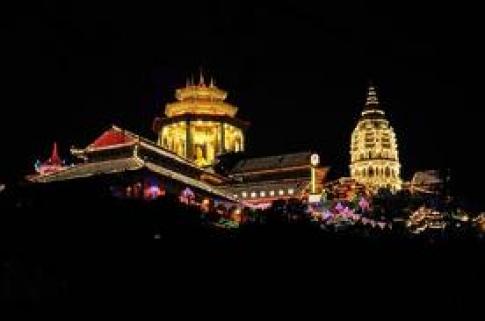A natural choice for world heritage status

“Heritage is our legacy from the past, what we live with today, and what we pass on to future generations.”
S. Muthiah
“Heritage is our legacy from the past, what we live with today, and what we pass on to future generations.”
Unesco / Founded in 1787, George Town, capital of Penang State, Malaysia, was declared a World Heritage Site by Unesco on July 7, 2008. Fort St. George in Madras that is Chennai is 150 years older and sowed the seeds for territories such as Penang, but has not received similar recognition. For over a decade, I have been appealing for the older Fort St. George to be declared a World Heritage Site (WHS), given its historical significance. And it is this case that I present again for consideration to the Committee on World Heritage Matters constituted by the Central Ministry of Culture when it holds a meeting in Chennai today to hear local views.
Unesco defines a WHS as a place or environment of “great significance” or meaning to mankind. It may be a living urban city or a rural settlement, a natural landscape (an underground cave, for instance), a forest or a water body, an archaeological site (where excavations have revealed relics of the past) or a geological phenomenon. Thus, it could be a natural site, a cultural site (which would be a traditional man-made settlement representative of a culture or cultures resulting from human interaction with the environment), or a site that’s a mix of both.
Four points
To be slotted into one of these categories, a potential WHS would need to, according to Unesco:
1) be of outstanding universal value which would be reflected in the historic, social, scientific, aesthetic and/or spiritual value of the place to mankind.
2) display progressive developments in architecture, technology, the creation of monuments, town-planning, landscaping, etc.,
3) reflect a distinct cultural tradition/civilisation that is still vibrant or which has disappeared; and
4) have exceptional examples of building styles that reflect its history.
Fort St. George, from where Madras was born and from which modern India grew, meets all these criteria and more.
In historical terms, its outstanding universal value is unquestionable. From 1640 to the 1770s it was the chief British settlement, from Aden to Manila. From here grew not only the Empire, but also every institution of modern India. From governance by a governor and council and a municipal corporation, to the birth of the Indian Army and the founding of such institutions as the country’s first Western-style school (St. George’s today), the first technical school — the Survey School (later the College of Engineering, Guindy) — the first General Hospital, the first modern observatory and a host of other institutions, to, in more recent time, the first regional political party to sit in an Indian legislature (the Justice Party) and the introduction of Prohibition heeding Gandhiji’s call, Madras has a near-375-year-old history of achievement that is truly outstanding.
Like the Fort, the “Indian” town that grew outside it — first the Old Black Town (now the High Court-Law College campus) and then the New Black Town (now George Town, Madras that is 50 years older than George Town, Penang) — has over the years reflected multiculturalism in ethnicity, language, religion, the arts and cultural tradition ranging from those of the English and Portuguese, to the Armenians, Gujaratis and Marwaris and the native Tamils and Telugus, of scores of different communities. Here flourish, or are remembered, all the major religions of the world. A score of languages are spoken every day and numerous cultural traditions are followed as a matter of course. And the architecture ranges from the centuries-old traditional to its later variations and the classical and colonial, from Madras’s own contribution, Indo-Saracenic, to art deco and the modern. As for town-planning, the gridiron lay-out for the “native” shophouses and other quarters behind the Fort and the merchants’ offices along the shoreline is colonial urban development pioneered here.
With Fort St. George and George Town up to the Old Town Walls as the core zone, and from Royapuram to Park Town, Purasawalkam, Egmore and Chepauk to Triplicane High Road as the buffer zone, here is a site deserving of World Heritage consideration for its historic contribution to not only modern India but also to the empire the British spread beyond it. Empires may come and go, but history remains to be remembered and commemorated.
(S. Muthiah is a chronicler of Madras.)




 del.icio.us
del.icio.us Digg
Digg

Post your comment